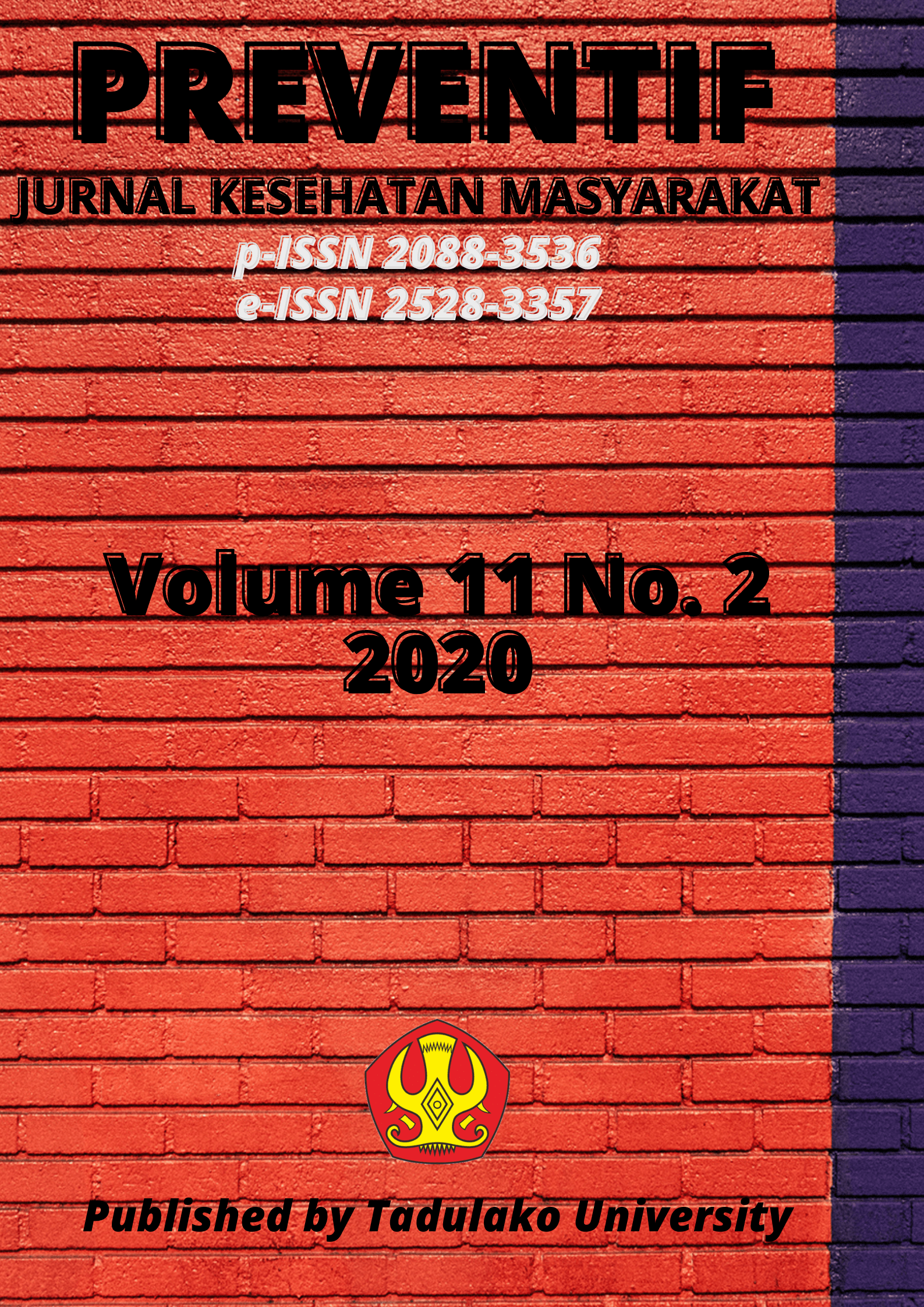The Relation Between Sugar Intake In Ultra Processed Beverages And Energy Intake Of Food And Beverage To Teenage Overweight
DOI:
https://doi.org/10.22487/preventif.v11i2.111Kata Kunci:
overweight, sugar, ultra processed beveragesAbstrak
Overweight is an accumulation of excess adipose reserve within the body, resulting in an increase of bodyweight. Consumption of ultra-processed beverages, and energy intake from food and beverage are several fators that can cause the problem of overweight. This research aims to understand the relation between sugar intake in ultra-processed beverages and energy intake from food and beverages with overweight among teenage students of senior high school 6 Surabaya. The research is an observational research with cross-sectional design. Sampling is taken using proportional random sampling technique. The number of participants are 80 teenagers from 10th and 11th classes in June 2020. Participants are aged 15-18 years old. Energy intake from food and beverages are taken from 2x24 hour recall questionnaire, and sugar intake from ultra-processed beverages taken from seven-day beverages diary.. Statistical analysis are done using chi-square. The result shows relation between energy intake from food and beverages with overnutrition, with (p =< 0,001). In conclusion, excess energy intake from food and beverages relation with overweight problem to teenagers, thus requiring balanced nutritional guide education as well as annual nutrition status monitoring, from the school to its teenage students.



